Founded in 1945 in Havana, Cuba – before many of today’s major airlines even took flight – the International Air Transport Association (IATA) has grown into the backbone of global aviation. From standardizing tickets and airport codes to driving sustainability and innovation, IATA shapes how the world flies.
If you’re an industry professional, chances are you interact with IATA’s work every day – even if you don’t realize it. So, let’s talk about IATA: what it does, how it shapes air travel, and how its projects matter.
What is IATA?
IATA or the International Air Transport Association is the global trade association of airlines (for both freight and passenger carriers) that regulates the aviation industry by developing standards, procedures, and practices. As of today, it has 350 airline members in 126 countries and territories comprising around 82 percent of total air traffic.
If you feel more comfortable with video content, watch our 9-minute explainer of IATA’s history, functions, and role in the industry. For more details, keep reading.
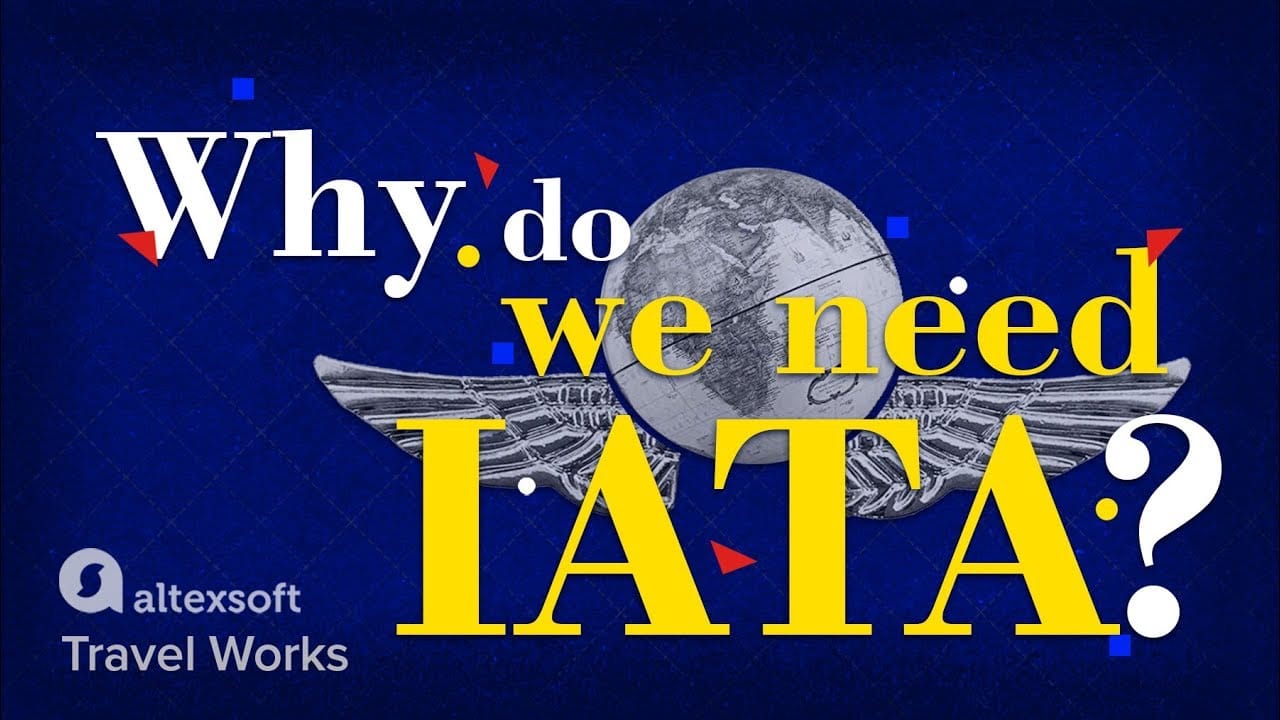

IATA overview
Brief history of IATA
1919 was called “the year of the world's first international scheduled services” because of the International Air Traffic Association's creation. Its main areas of concern were the technical and legal issues, and a lot was done in those early days to set tech and safety standards and create a solid legal basis. However, many questions remained untouched, especially the ones related to rates, itineraries, schedules, and revenue from connecting flights.
In 1944, the International Civil Aviation Organization (ICAO) was formed as an intergovernmental body to tackle the existing issues, provide economic regulation, and manage air traffic. However, it failed to solve all the problems.
So, in 1945, the representatives of 57 airlines formed IATA to address the challenges of developing tariffs and fare rules, allocating revenue, creating global flight schedules, and much more.
Today, the international scheduled air transport industry is over 100 times larger than it was in 1945, not the least due to IATA's regulation, which keeps working hard to make air operations safer and more efficient.
IATA’s mission and main purposes
As stated on IATA’s official website, its mission is “to represent, lead, and serve the airline industry.” It means that IATA advocates for the interests of airlines on the world stage as well as creates industry standards that
- simplify processes,
- increase safety,
- enhance passenger convenience,
- reduce costs,
- improve efficiency, and
- help achieve sustainability goals.
This way, IATA regulations benefit all parties involved, i.e., airlines, travel agents, passengers, customers, ground handlers, and others. IATA also offers expert services, professional support, and educational options to industry stakeholders.
IATA vs ICAO vs FAA
To give you a fuller understanding, IATA isn’t the only regulating body in the aviation world. The aforementioned ICAO, a specialized agency of the United Nations, is also an important organization. In contrast to IATA that was initially formed as a trade association to represent airlines, define fares, and provide settlement services, ICAO’s primary task was establishing regulations (though IATA somewhat strayed into that lane).
Today, both of them work on developing industry regulations and enhancing flight safety and efficiency, but their focus areas differ. We can say that ICAO mainly defines standards for member nations (e.g., cross-border procedures or airspace boundaries), while IATA sets rules for member airlines (e.g., baggage allowances or fare policies).
There’s also the Federal Aviation Administration (FAA), a United States Department of Transportation agency, that oversees civil aviation in the US. It’s particularly concerned about air traffic management, aircraft manufacturing and maintenance procedures, airport facilities compliance, pilot and airmen certification, technology development, and so on. Oh yeah, commercial space transportation is also under their wing.
IATA airport codes
Every time you book a flight, check in your luggage, or look at an airport departure board, you’re seeing those three-letter codes like LAX, JFK, or KBP that identify airports around the world.
These are airport codes, created and maintained by IATA to bring order to the chaos of global air travel. With more than 11,000 airports in the world, a universal shorthand was essential -- one that every airline, travel agent, and booking system could instantly recognize.
IATA took on that task, designing a simple, three-letter coding system that’s now woven into nearly every part of air travel: tickets, boarding passes, baggage tags, flight schedules, and databases.
Behind the simplicity lies careful coordination. IATA regularly assigns, updates, and regulates these codes to avoid duplication and confusion – especially in cities with multiple airports. It’s a global language of aviation efficiency, one that keeps travelers, airlines, and systems speaking the same code no matter where they are in the world.
Read our article demystifying all of IATA codes and numbers.
Now that you’ve got a general idea of what IATA is, let’s go over its main activities. In our overview, we’ll stick to the categories suggested on its official website.

IATA’s main areas of activity
IATA Programs and Policy: standards and regulations of different aspects of air transportation
The Programs & Policy section includes a wide range of initiatives that regulate various aspects of the commercial aviation industry.
Cargo: regulating and digitizing air freight
Interesting fact: Every day, on average, 657 million shipments worth $18.6 billion are transported by 100,000 planes, including 80,000 flowers and 200 race horses. Sounds impressive, right?
Obviously, such cargo volumes and diversity demand close attention to every detail, taking into account the unique requirements of some categories – and clear potential danger of others. So IATA sets compliance standards that concern the safe transportation of
- medical/pharma items,
- dangerous goods,
- live animals, and
- perishables (read about the specifics of cold-chain logistics in our dedicated post).
Besides, within the scope of air cargo regulation, IATA focuses on the following initiatives.
Digital cargo addresses the inefficiency of manual processes and aims at increasing connectivity and driving innovations. The initiatives here include e-freight/eAWB, Cargo Connect, ONE Record, and Interactive Cargo.
The Cargo Operations category provides guidance on safe and efficient handling of goods in the airports, suggests recommendations for building cargo facilities, regulates warehouse activities, and so on.
Cargo Border Management focuses on facilitation of global trade and logistics through IATA’s cooperation with customs, international organizations (ICAO, UN, WCO, WTO), and national regulators.
Cargo Sustainability includes projects that address climate change, gender imbalances, and other social issues.
Passenger Experience & Policy: streamlining airport procedures and adopting biometric recognition
Since global passenger traffic is expected to double by 2041, IATA and other industry organizations work on establishing standards to accommodate such volumes and streamlining airport procedures. The One ID initiative aims at facilitating passenger identification through paper-free, contactless biometric recognition technology. Read our article describing airlines’ self-service solutions for more innovation stories.
Distribution, Payment, and Taxation: implementing NDC and regulating interlining flights
This part is about IATA trying to simplify and enhance the customer shopping and purchasing experience both before and during the flight. One of the main initiatives here is New Distribution Capability (NDC) – a new data exchange standard that allows airlines to deliver rich content and ancillaries to their customers.
As of now, over 100 airlines are at different levels of NDC adoption, and NDC content is now provided by major global distribution systems (GDSs) alongside multiple smaller flight aggregators.
Other projects concern regulating connecting flights (see Multilateral Interline Framework), working on rates that change dynamically (read our article about dynamic pricing e), and addressing other transaction-related aspects.
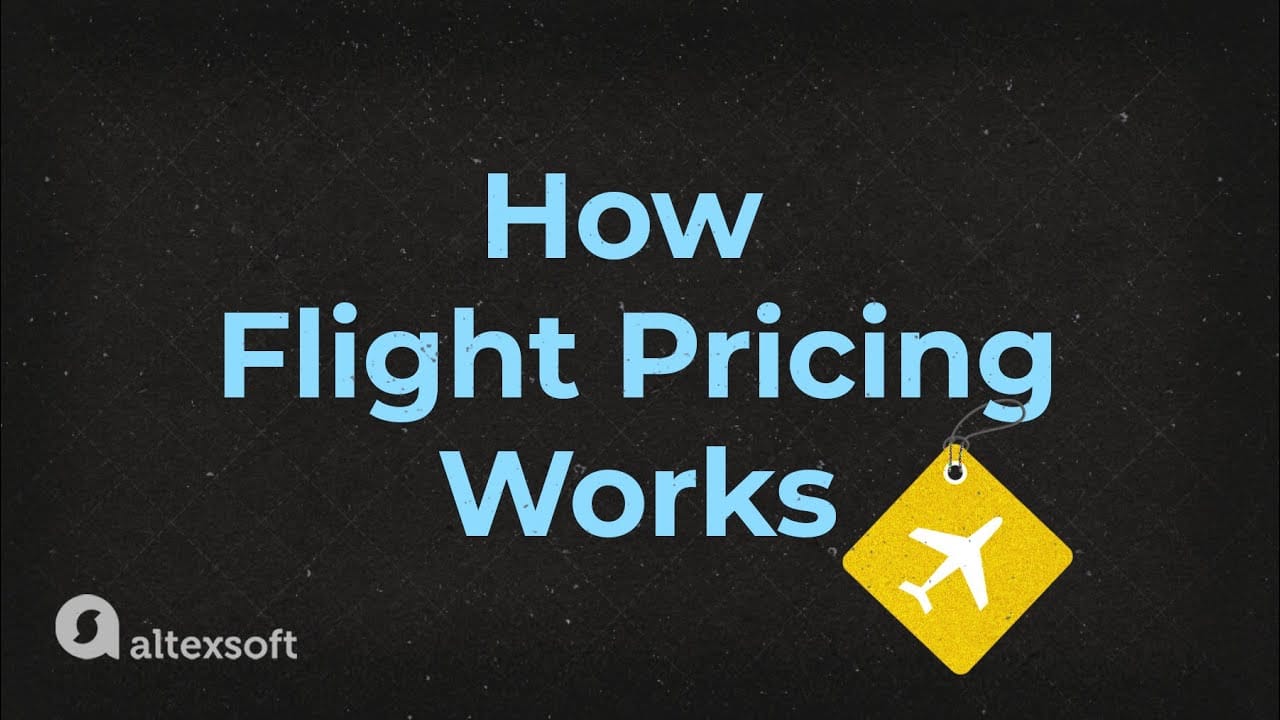

How flight pricing works
Safety: improving operations for utmost security
Despite many people’s aerophobia (that’s when folks are afraid of flying – you probably know a person or two who never dared to go on a vacation abroad), planes are the safest means of long-distance transport ever. Airlines have been constantly improving their equipment and practices to maximize their safety records. As a result, in 2018, the accident rate was 1.35 per million flights – compared to 27.2 in 1960!

Epic fail. Source: Bored Panda
Funny enough, the safer aviation gets, the harder it becomes to improve it because there’s less areas for enhancement. But still, IATA has lots of specialized programs that focus on
- operational safety – as the primary concern of all airlines – that oversees cabin activities, runway procedures, in-flight processes, fatigue management, and so on;
- corporate safety to improve performance and mitigate risks;
- safety audit to assess the implementation of developed policies and procedures;
- customer feedback collection for anyone who wants to make suggestions or communicate their concerns;
- data management to analyze issues and identify potential risks; and much more.
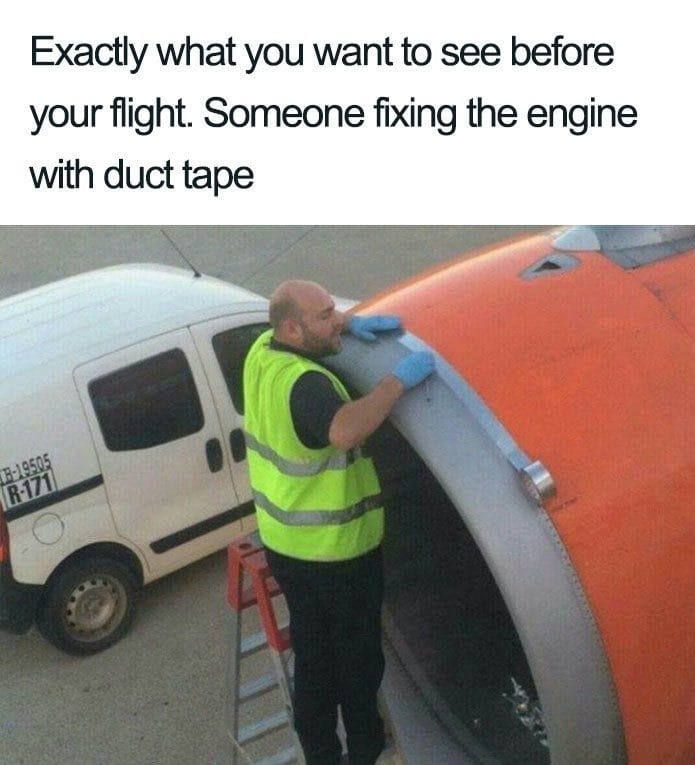
Looks pretty bad, but for the record, it’s not your daddy's usual duct tape; it’s a very specialized speed tape that costs up to $1000 per roll and is used as a temporary fix of minor damages. Source: MEME
Aviation Security: enhancing safety through global cooperation
The aviation security section addresses the safety aspect through close collaboration with governments and international organizations. Such partnership has to tackle existing and potential threats and vulnerabilities by developing and implementing global standards. Some of the initiatives concern innovating and adopting modern screening detection technologies, while others focus on data sharing or address cybersecurity issues.
Sustainability: working towards eco-friendly goals with Fly Net Zero, SAF, and carbon offsets
Today, aviation is one of the major sources of greenhouse gases that cause irreversible climate changes, so IATA and member airlines adopt various strategies to reduce the harmful impact and decarbonize their operations.
In 2021, IATA member airlines signed a resolution committing to achieve net-zero carbon emissions from their operations by 2050. To reach this ambitious target, IATA developed a strategy that involves a combination of methods.
- Sustainable Aviation Fuel (SAF) usage that minimizes emissions should account for 65 percent of the result.
- Offsets (read about Carbon Offsetting and Reduction Scheme for International Aviation or CORSIA in a separate article) and carbon capture programs are slated to comprise another 19 percent.
- New digital and engine technologies (electric and hydrogen) should contribute 13 percent. Learn more about the role of technologies in making the travel industry greener in our dedicated post.
- Improving infrastructure and operational efficiencies will presumably comprise 3 percent of the total change.
Other IATA’s green initiatives include managing cabin waste, combating wildlife trafficking, and educating passengers.
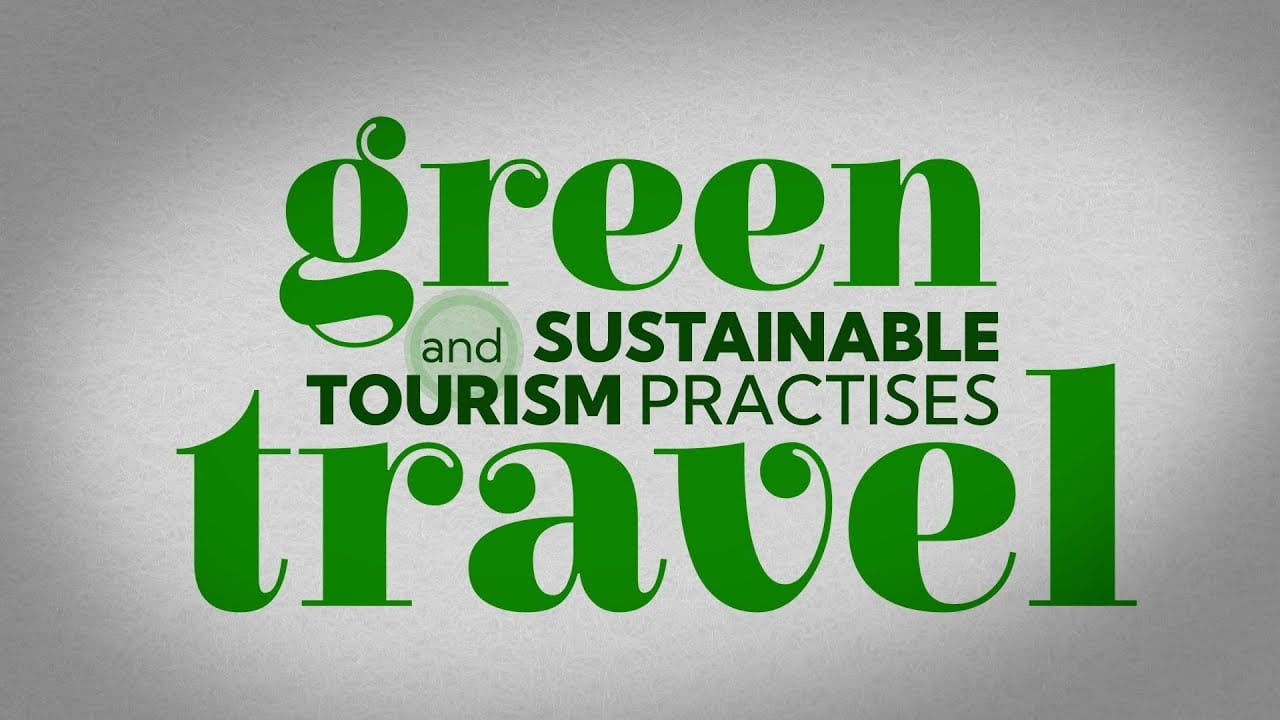

Our vision of green travel
Operations and Infrastructure: optimizing daily workflows
Passengers grumbling about tight baggage allowances are also the result of IATA’s activity. Airlines always strive to increase operational efficiency both on the ground and during the flight, so IATA develops standards that regulate
- technical operations (optimizing and digitizing technical aspects, maintenance, and parts management);
- baggage services (it’s not only about the suitcase sizes but also about tracking luggage and managing lost and found items);
- ground operations (designating procedures to maximize the safety and efficiency of ground handling activities);
- pilot and maintenance technicians training (developing programs for flight crew and tech staff training, licensing, and assessment); and
- fuel management.
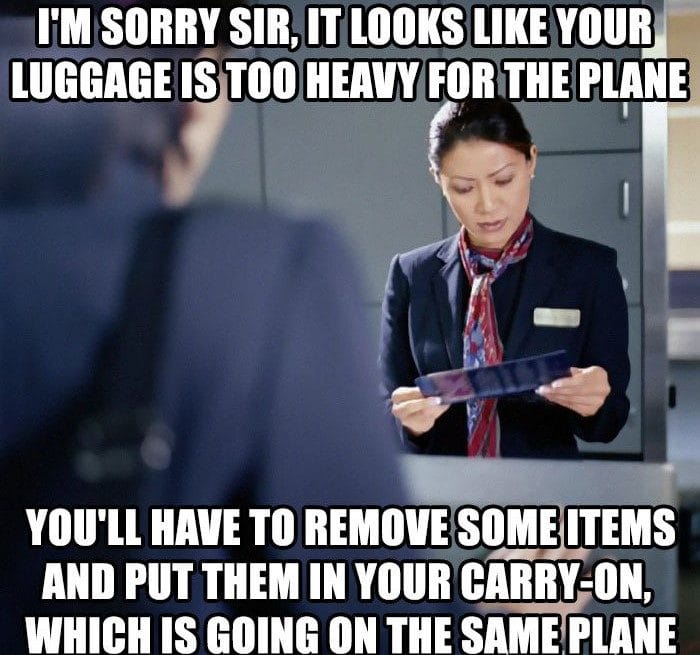
Those rules. Source: Bored Panda
For example, IATA’s Resolution 753 sets standards for baggage tracking, aiming to reduce the number of lost or mishandled bags. The initiative requires airlines to electronically track baggage at key points in its journey, ensuring that bags are correctly handled, transferred, and delivered.
IATA also works with airports on standardizing, digitizing, and optimizing air traffic management and airport infrastructure.
The Innovation Hub: transforming the aviation industry
The Innovation Hub is where you can learn of and take part in, well, IATA’s innovation projects. These activities are governed by the Digital Transformation Advisory Council (DTAC) and include
- Accelerate@IATA that connects airlines and innovative startups,
- Hackathons that give talented developers a chance to share their new ideas and solutions,
- Think Tank that unites ideation teams that work on new initiatives, and so on.
Besides, there’s IATA’s developer portal where external IT specialists can find tech documentation, get access to Open API Hub and NDC guidelines, obtain certification, etc.
IATA’s Services: products and solutions for the aviation industry and its partners
The Services section mainly caters to those who work with airlines, i.e., travel agents, freight forwarders, airports, ground handlers, and other industry partners. As the name declares, it’s not about the regulations or telling others what and how to do but about supporting collaboration and providing instruments for efficient operations. Here’s what IATA offers.
Travel and Cargo Agency Program
Being IATA-certified means a lot for travel agents. Besides joining a community of over 70,000 members operating in 207 countries and territories, the IATA number gives travel agents the power to issue tickets on behalf of airlines, grants access to the Billing and Settlement Plan (BSP), and confers industry recognition and credibility acknowledgment.
Check our detailed article on how to get that IATA certification if you want a step-by-step guide.
It’s a similar story about getting IATA’s Cargo Agent accreditation. It gives companies involved in the air freight industry global recognition of financial and professional competence.
Certifications: ensuring you’re up to standard
IATA provides a suite of certification services aimed at helping organisations in the air-transport sector demonstrate that their systems, processes and training meet rigorous industry standards and best practice. This includes
- Special Cargo Certification for gaining credibility in pharmaceutical, live animal or perishable shipments;
- Operations, Safety & Security Certification for proving you meet industry standards in cargo handling, security management, and more;
- Environment & Sustainability Certification given for positive social and environmental impact; and
- Training & Development Certification highlighting the quality and effectiveness of your training.
IATA certification is not to be confused with IATA accreditation for travel and cargo agents, which we covered earlier.
Data & Statistics: sharing industry data and insights
IATA collects massive amounts of diverse data from airlines, airports, travel agents, and other industry players. Data categories are
- Passenger traffic data,
- Cargo data,
- Safety and MRO solutions,
- Travel agent data, and
- Surveys.
Information allows you to get a complete picture of passenger and cargo flows, identify and analyze market trends, benchmark your own company, and make data-based decisions.
For example, for carriers, IATA offers a Direct Data Solutions (DDS) tool to get access to a global dataset of airline sales, market, and itinerary data. Airlines can connect via APIs, use a web-based analytics tool, or receive regular reports. By the way, if you’re interested in flight APIs, we got all sorts of them for you.
Financial Services: settlement systems and other financial instruments
To facilitate transactions between the air industry stakeholders, IATA provides a number of financial instruments. These include but are not limited to
- Billing and Settlement Plan (BSP) to settle passenger sales between airlines and travel agents,
- Cargo Account Settlement Systems (CASS) to settle payments between cargo industry players,
- IATA Clearing House (ICH) for debt collection,
- IATA Exchange Rates to support interline billing and establish tariffs, and much more.
In addition, there’s an e-invoicing (Simplified Invoicing and Settlement) system, a digital platform that helps make invoicing procedures completely paperless. There are also tools for payment management, cost optimization, card fraud detection, data exchange, and more.

Amen to that. Source: CHEEZburger
Similarly, IATA offers digital financial helpers to travel agents, airports, and industry partners. In this section, you can also find Air Pulse, IATA’s financial and distribution news portal.
Compliance Solutions: ensuring standardization and compliance
IATA provides instruments that help industry players comply with standards and regulations. These tools include
- DG AutoCheck is for those dealing with dangerous goods;
- The Air Cargo Tariff and Rules (TACT) is the most current collection of air cargo market information such as rates, rules, compliance regulations, and schedules;
- Integrated Management Solutions (IMX) is a software platform developed for airlines and ground handlers that helps collect, manage, and analyze quality and safety data; and
- Timatic is the complete collection of travel requirement rules.
These products can help optimize various cargo, passenger, and ground handling operations, provide most current regulations data, and ensure companies compliance with industry standards.
One of the practical improvements was the implementation of IATA's DG AutoCheck system that has significantly enhanced the handling of dangerous goods. This automated compliance tool assists airlines, ground handlers, and freight forwarders in verifying that shipments meet safety standards before transport.
Consulting: sharing expertise and experience
Obviously, during 70+ years of its existence, IATA has gained unbeatable expertise in all possible aspects of the air industry. So now its specialists help airports, airlines, tour operators, travel agents, freight forwarders, and other companies understand the market, optimize operations, and grow their businesses.
IATA offers a wide range of consulting services within such scopes as
- revenue enhancement,
- safety and flight operations,
- air cargo traffic forecasting,
- NDC,
- fuel management,
- sustainability strategy,
- airport development, and much more.
If you want to take advantage of IATA’s unrivaled industry knowledge, you have to contact them for further information on such a partnership via this contact form.
Manuals, Standards, and Regulations: source of guidelines for the industry
Here IATA publishes all of its standards, guidelines, and best practices in air transport in such areas as
- dangerous goods,
- special cargo,
- cargo operations,
- ground operations,
- finance, retailing & distribution,
- safety,
- security,
- airport infrastructure,
- flight & technical operations,
- environment & sustainability,
- passenger experience, and
- travel & tourism.
As of today, there are 84 manuals published.
Training: education and certification programs
You can visit IATA’s Training section if you want to add a certificate or diploma in one of the air industry subject areas to your resume. You can choose live or online training, opt for in-house education, or study yourself. Assessment is also conducted in various formats, i.e., live classroom, live virtual, online supervised, or unsupervised.
IATA also has an international network of over 450 partnering institutions where you can obtain in-depth, aviation business-centric knowledge in the chosen area – from air navigation to airline business management to environment protection.
To learn more about training courses IATA provides, check our article.
Other useful resources: airline codes, events, customer portal, etc.
In addition to all the valuable information and handy solutions we described, IATA’s website contains a few more useful sections we’d like to mention.
IATA has developed several coding systems to facilitate identification of airports, airlines, luggage, and so on. You can utilize their free Airline and Location Code Search online tool or purchase the Airline Coding Directory to have the coding information in your business management system for commercial purposes such as ticketing, cargo documentation, etc.
The Events page announces all the upcoming conferences, exhibitions, and industry meetings.
The IATA Customer Portal is where you can create an account that gives personalized access to IATA’s services, direct communication channels, special offers, and more.
The IATA for You section categorizes information and solutions in a visitor-centric way. It means that if you are, for example, a freight forwarder or a travel agent or just a bored traveler stuck in the airport for a long layover, you can choose the relevant category and find the products or services IATA can offer to you. Try it out and we’re sure you’ll get a lot of new, interesting, and valuable information from the leading aviation industry regulatory establishment – IATA.
Recent IATA projects and initiatives
To better understand IATA’s activity and impact, let’s review their most recent projects and initiatives, covering areas like sustainability, safety, and technology.
SAF market support
To accelerate Sustainable Aviation Fuel (SAF) uptake, IATA has launched a global SAF Registry to track SAF deliveries and emissions credits worldwide. Backed by airlines, governments and producers, the Registry will ensure airlines can claim the CO2 reduction from SAF usage without double-counting, effectively creating a book-and-claim system across regions.
Over 30 early users are currently onboarding and preparing to use the system. Participation is free until April 2027, after which it will transition to a cost-recovery model.
Emissions tracking (TrackZero)
In 2024 IATA launched TrackZero, a new platform where airlines report primary CO2 data. By year-end 82 carriers (45 percent of industry by traffic) had joined. The first Net Zero Progress Report (2024) showed gross emissions of 942 Mt CO2 with only ~1 percent mitigated by SAF/offsets, and a 3.7 percent improvement in emissions per revenue-tonne-km (thanks to efficiency gains). TrackZero will provide annual updates on industry progress and quantify measures.
Data-driven safety (GADM, FDX/IDX)
IATA is leveraging big data to predict and prevent incidents. Its Global Aviation Data Management (GADM) program now aggregates large data streams (Flight Data eXchange, Incident Data eXchange, etc.) from airlines. By analyzing these, IATA identifies emerging hazards – for example, it flags areas with increasing GPS signal loss as a safety risk. This initiative shows IATA’s transition from rule-making towards analytics: sharing and mining millions of flight data points reveals otherwise undetectable patterns.
Digital identity and contactless travel
IATA has led pilots of fully digital passenger journeys. In October 2023 it demonstrated the first end-to-end “shopping-to-arrival” trip using digital ID and biometrics (London to Rome). In October 2024 a second proof of concept (Hong Kong to Tokyo) had two passengers use digital wallets and verifiable credentials ((passport, company ID, loyalty) so they never showed physical documents. These cutting-edge trials validate standards like OneID and NDC, confirming that a seamless, one-ID passenger flow is technically possible.
Air cargo digitalization
IATA is accelerating tech innovation in cargo. In March 2024 it launched a Cargo Digitalization Leadership Charter – major carriers (Cathay Cargo, IAG Cargo, LATAM Cargo, Lufthansa Cargo, etc.) agreed to five principles for data-sharing and interoperability. The charter enshrines use of the IATA ONE Record standard for end-to-end data exchange and commits to cybersecurity, AI ethics and sustainable IT use.

